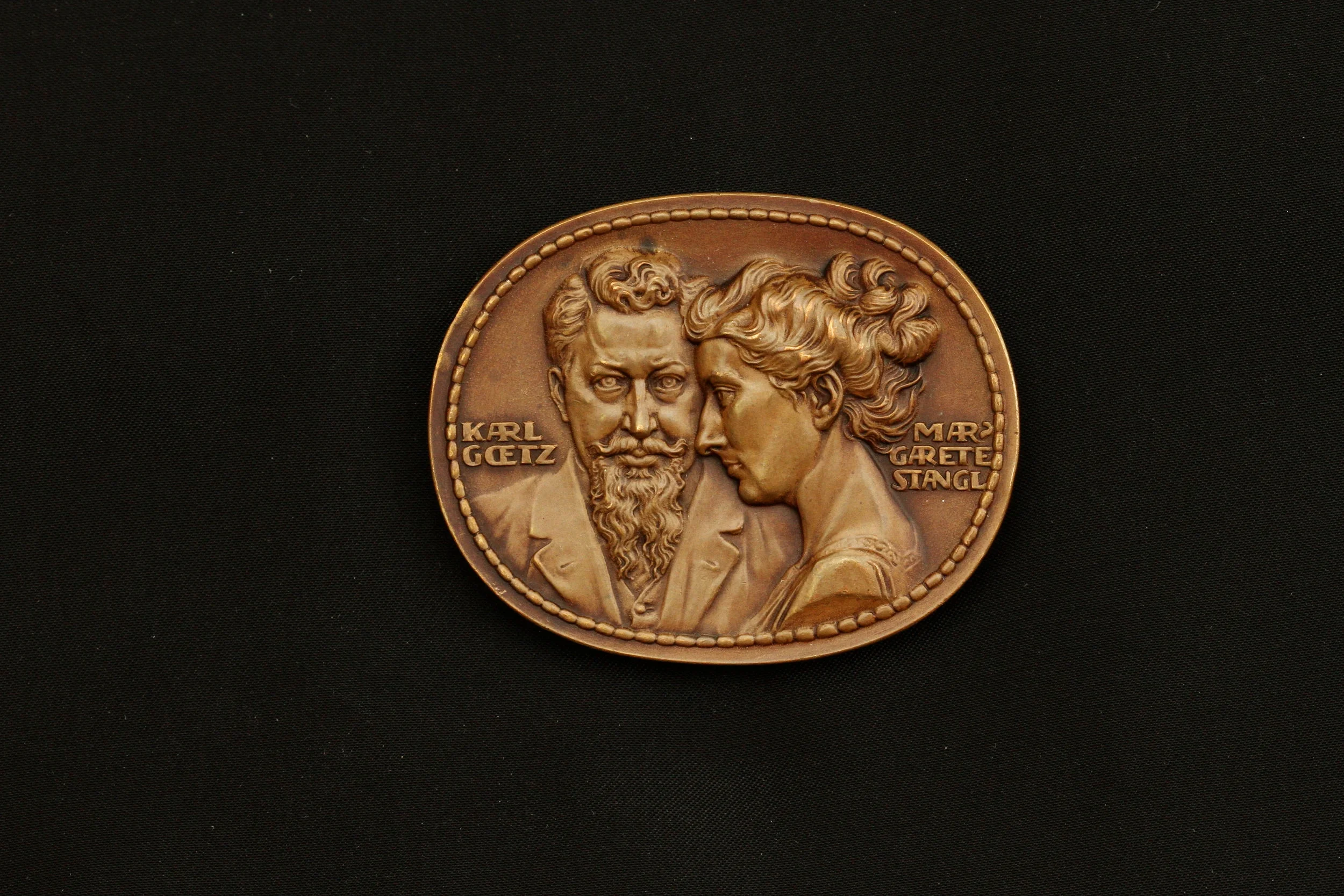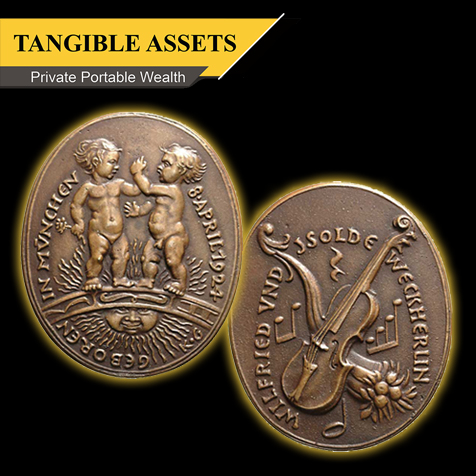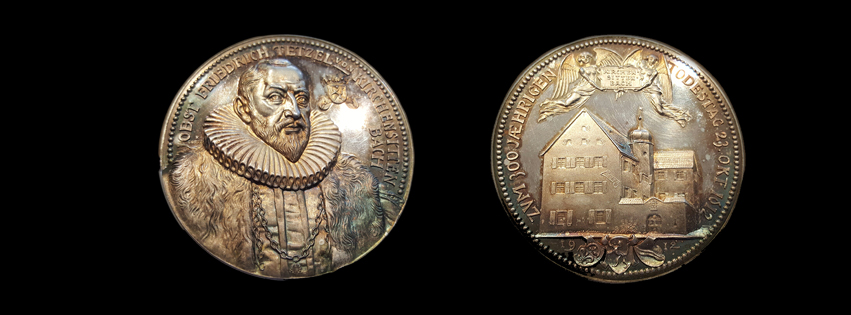Why is this medal so rare? Read on…
In 1965 Charles M. Schulz, after extensive research in all aspects of World War I, introduced his beloved Snoopy character’s alter-ego to fans worldwide. Dressed in a red scarf, goggles, and a flying cap, Snoopy would sit atop his doghouse (imagining it to be an airplane) and participate in dogfights against the Red Baron, who was based on a real German flying ace, Captain Baron Manfred von Richthofen. Schulz was obviously someone who closely watched trends because he debuted his new character during a period that glamorized WWI aviators in feature films, radio dramas, books, and comics.
Karl Goetz, an artist who created over 800 medal designs in his 40 year career, often cast into medallic history the turbulent events and German reactions to WWI. Like Schultz, Goetz often closely watched trends and avidly perused several newspapers to use as informational sources for his work. As we still experience in today’s world of fast-paced reporting, the media (whether in newsprint, on television, or on-line) can inadvertently give false or misleading information. What is seen or heard in the media should be confirmed through proper due diligence with regards to researching reliable and credible sources. Unfortunately, Goetz made errors on several of his medals due to such misinformation including one that commemorates the death of Captain Baron Manfred von Richthofen. Richthofen, nicknamed the Red Baron, was killed on the Somme battlefield April 21, 1918.
Richthofen was credited with 80 kills (more than any other WWI pilot) and was considered a true nobleman for his reputation of never killing an enemy after he had them outmaneuvered. He would force his opponent to land, land beside him in his red Fokker plane, help the other pilot out of his airplane, and treated the captured enemy with dignity and honor. It is truly unfortunate that this nobleman’s medal was created and cast with several errors: some versions of Goetz’s medals have 80 and some have 89 as the number of air victories displayed. The dates on some of the medals were also erroneous as Goetz transposed the correct date of death (April 21st) to the incorrect date of April 12th. The erroneous medal with 89 kills is considered to be rare and more valuable than the other medals. Why is that?
Curious why one erroneously casted medal would be more valuable than another erroneously casted medal? Call Dale at (989) 239-4655 to discover how medal values are determined.







